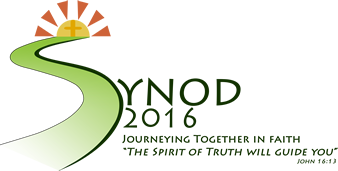Performance notes for each piece, prepared by composer Columba McCann OSB
Penitential Act
Please note that the version with chords for guitar or other instrument uses harmonies which are different from the full keyboard version and so should only be used on its own.
Glory to God
The refrain is intended to help the congregation participate, and is always sung in unison. Diocese of Limerick. Mass of St Íta: Patroness of Limerick. The full version here is for choir in two mixed parts: sopranos and altos in the upper and tenors and basses in the lower. It is possible to sing all of this in unison, as the lower part is normally doubled inthe accompaniment. Nor is it absolutely necessary to sing all the harmonies. A choir could learn the harmonies in stages, and perform some of it in unison in the meantime.
A simpler version of the verses is included, whereby the text is sung to a four-line tone by one or more cantors. This version also includes chord indications for guitar players and other instruments. The same refrain is used for both versions of the Glory to God.
Gospel Acclamation
The acclamation is first sung by a cantor or group, and then repeated by everyone. A one-bar introduction is given so that the singing begins without delay. Depending on the circumstances, some music directors may judge that a longer introduction is needed. This can be achieved by playing the first two bars of the refrain, followed by the last two bars.
The descant is optional, and should only be used when the congregation is already singing the acclamation with ease. Even in this case, it will often be best to use the descant only in the repeat of the acclamation after the verse.
A two-line tone is used to accommodate the verse given for each Mass in the Lectionary. Some sample verses are included in the setting. If a longer performance is needed, for example if the Gospel procession is to take some time, further verses could be added, either taking appropriate lines from the Gospel itself, or from the Book of Psalms. The Gospel Acclamation at the Easter Vigil takes the form of a Responsorial Psalm, with verses consisting of four lines each. Two more bars are given in the setting in order to provide a four-line tone.
Since Alleluia is not sung during Lent, an alternative text, which can be sung to the same tune, is provided.
Holy, Holy, Holy
This is a unison setting with optional three-part harmonies for two phrases. The middle part in these phrases may be sung either by the tenors or by the altos or, if circumstances suggest it, by a combination of both. The congregation could be encouraged either to sing the whole melody or just ‘Hosanna in the highest’. This latter option may make more sense when the three-part harmonies are sung by the choir; it would also be a useful way of gradually introducing congregational singing.
Acclamation after the Institution Narrative
This melody* comes from the Roman Missal. This and the other acclamations – ‘When we eat This Bread’ and ‘Save Us’, ‘Saviour of the World’ – can also be found, with accompaniment, from the International Commission for English in the Liturgy (ICEL), on their website: www.icelweb.org/musicfolder/openpdf.php?file=MemorialAccAccomp.pdf
* See the paper edition of this Mass setting for full details of the Roman Missal setting
Great Amen
This is a unison setting, with an optional extra line for tenors and basses if there is a mixed choir.
Lamb of God
Please note that the version with chords for guitar or other instrument uses harmonies which are different from the full keyboard version and the SATB setting, and so should only be used on its own.
Congregational participation in this piece may happen in one of two ways: the simpler way is for the congregation to simply sing the words ‘Have mercy on us’ and ‘Grant us peace’ where they occur. As a congregation becomes more familiar with the piece they may prefer to sing along with the soprano melody from beginning to end.
Inspiration for the Melodies
An international link: the melody for the acclamation of faith in the English version of the Roman Missal is in every altar missal used throughout the English-speaking world. Since this melody has an international link, and is also situated at a key moment in the great Eucharistic Prayer, I have used it as a source of inspiration for elements which are in many of the pieces.
A local link: composers sometimes like to play around with the fact that musical notes have names and letters associated with them.
- The note ‘A’ is also called ‘lah’ L
- The note ‘E’ is also called ‘mi’ M
- But it is also used by its own name E
- The note ‘D’ is also called ‘re’ R
- And the note C is also used. C
Together the notes A. E (repeated), D and C spell out ‘LMRC’. Since this Mass setting was commissioned by the diocese of Limerick, the opening phrases of the first and last piece use this combination of notes.
Columba McCann OSB
